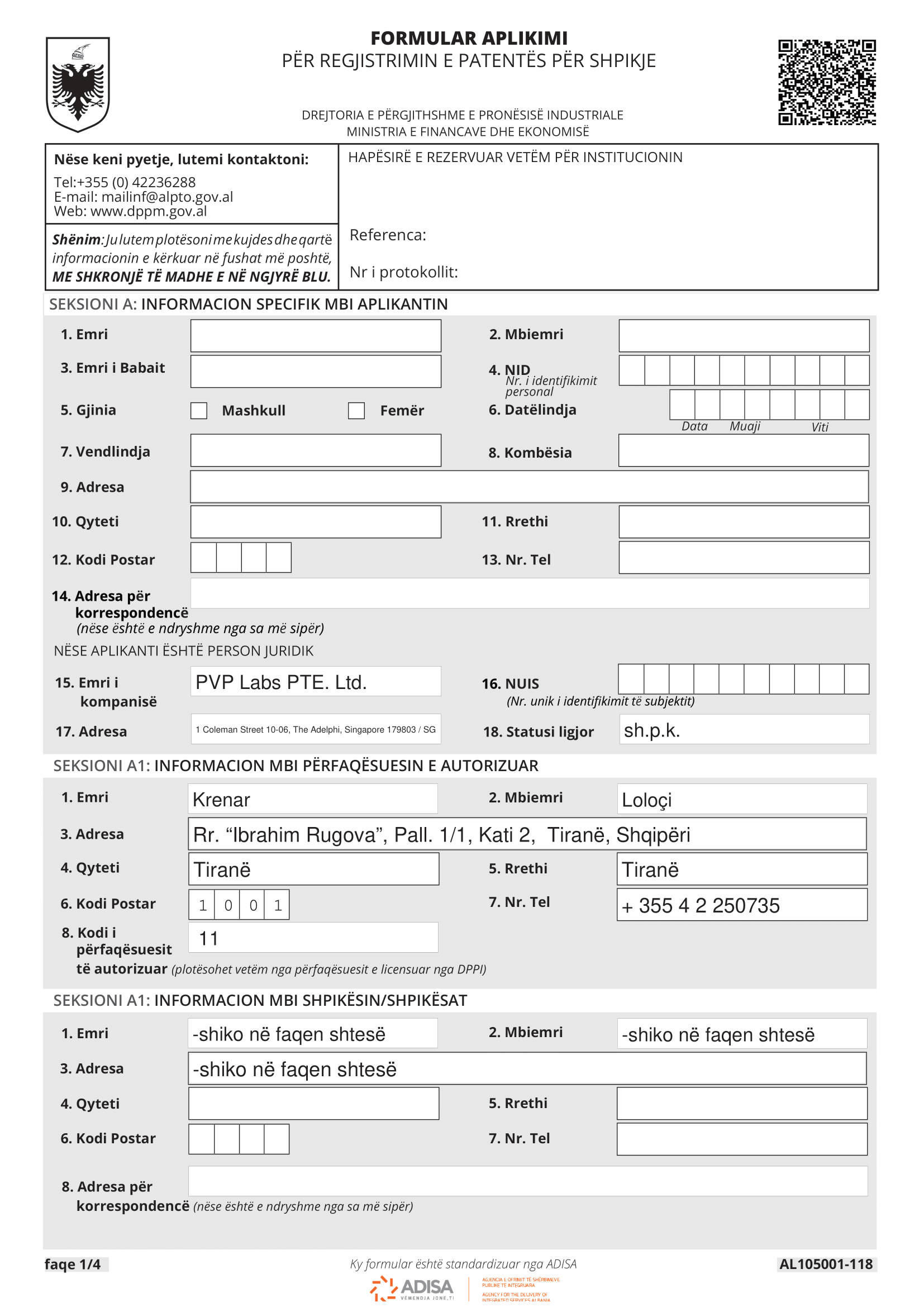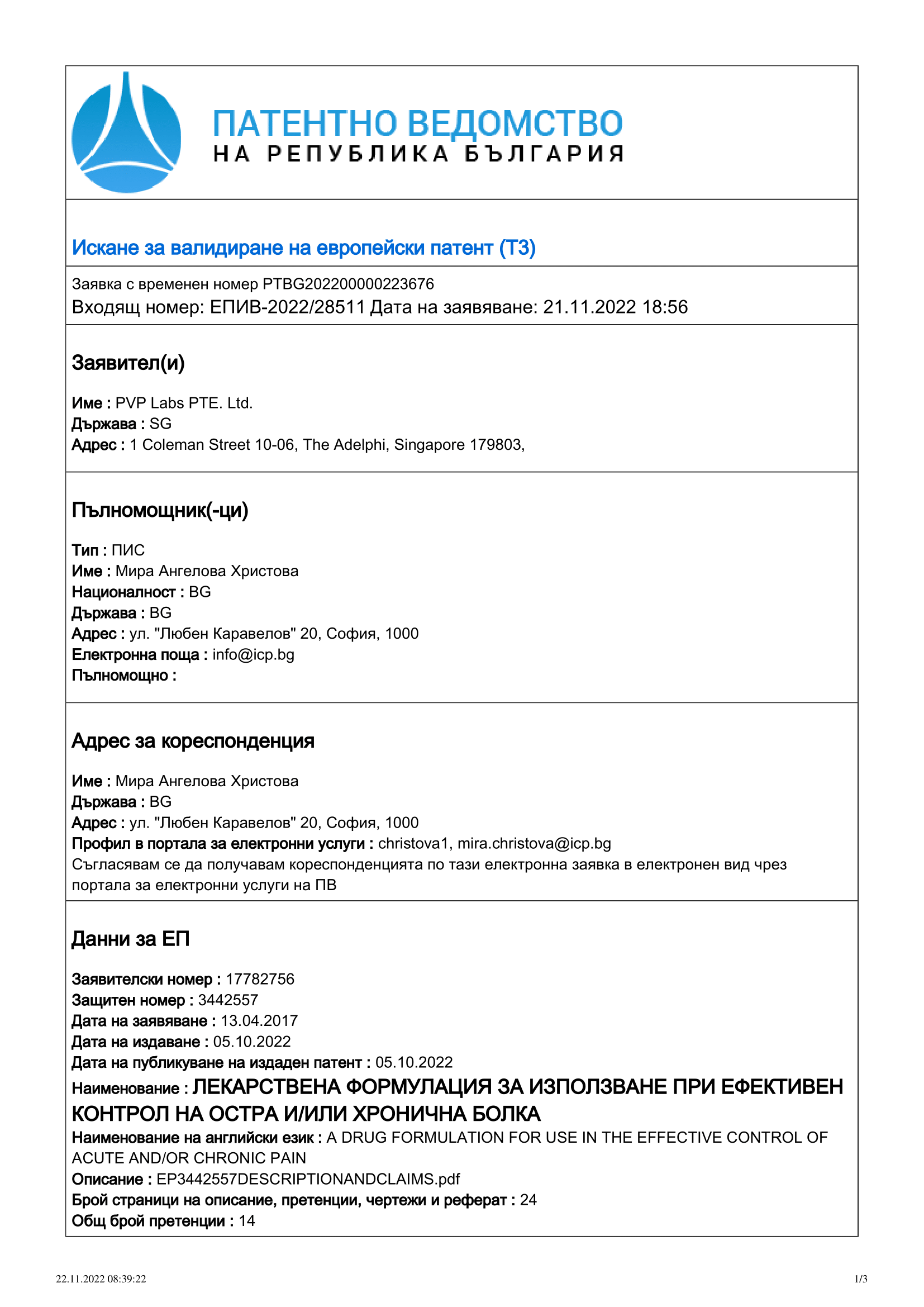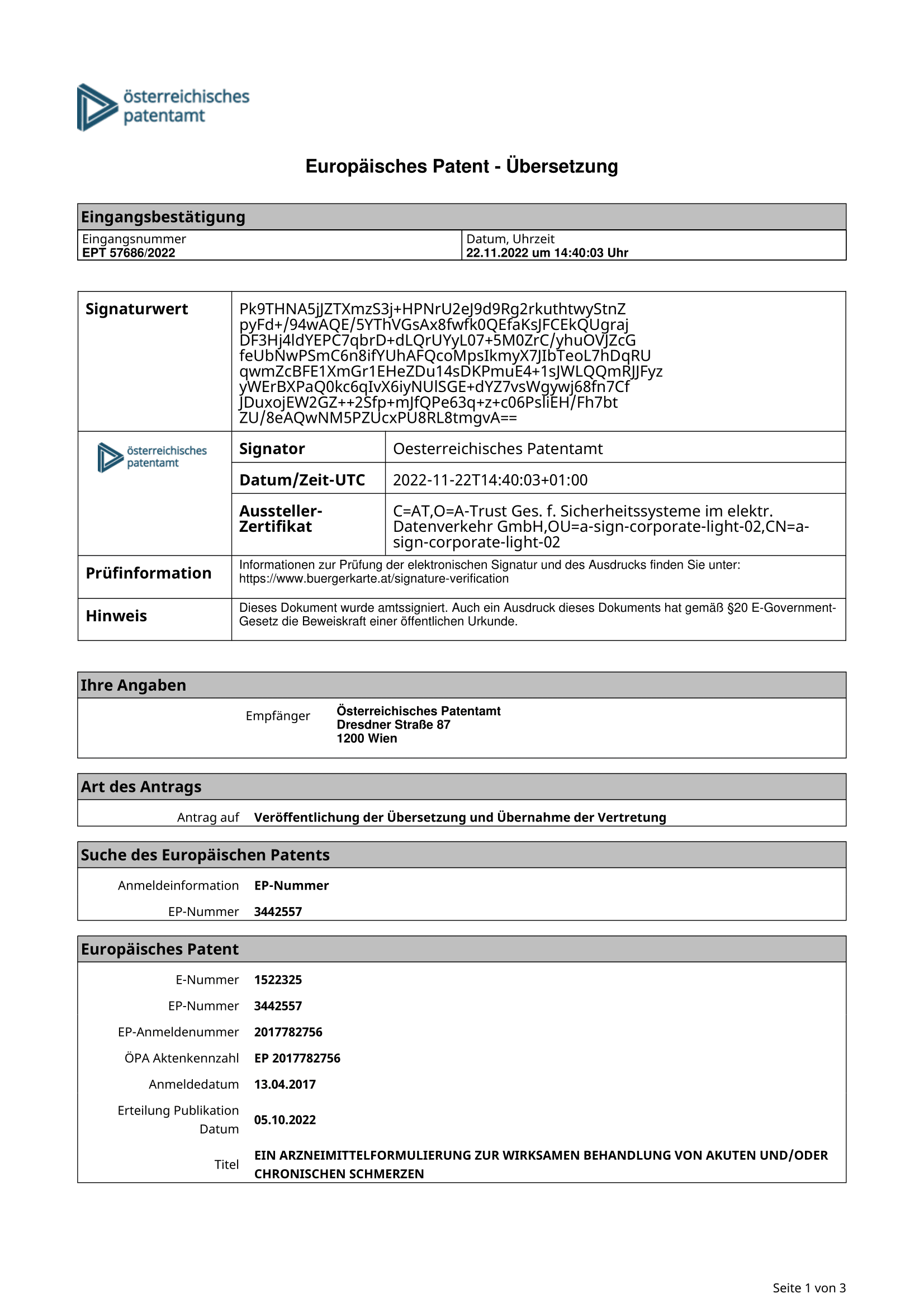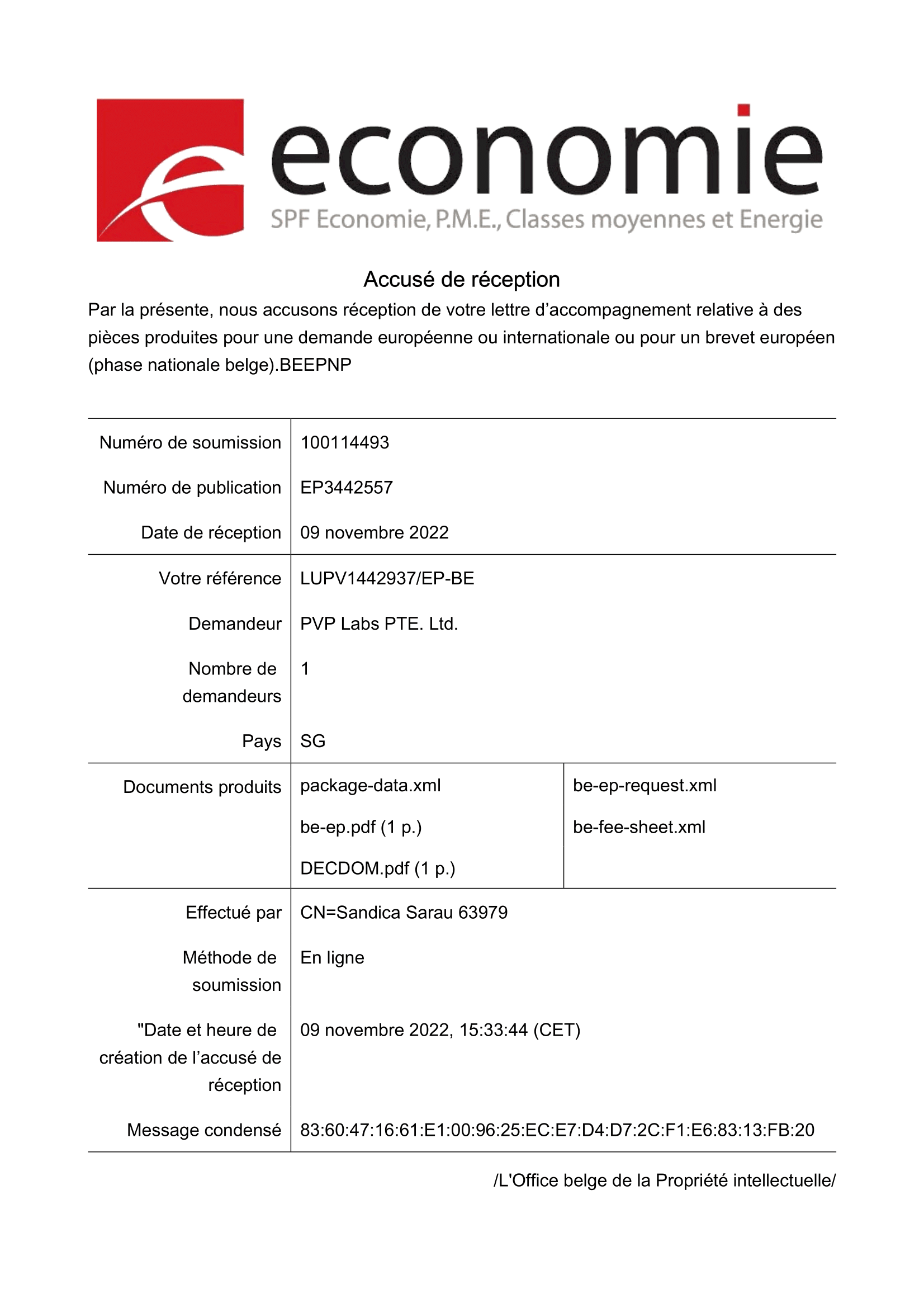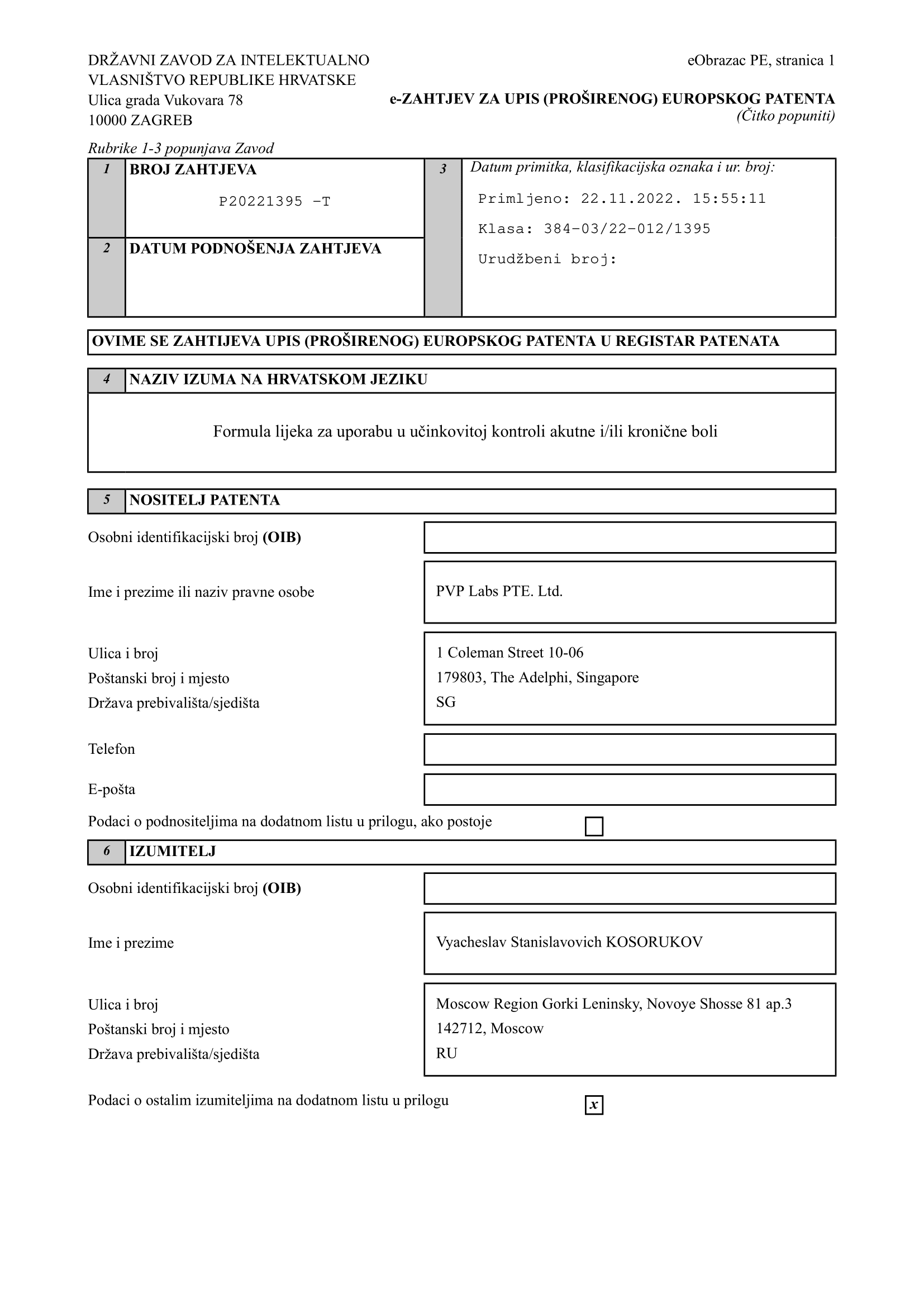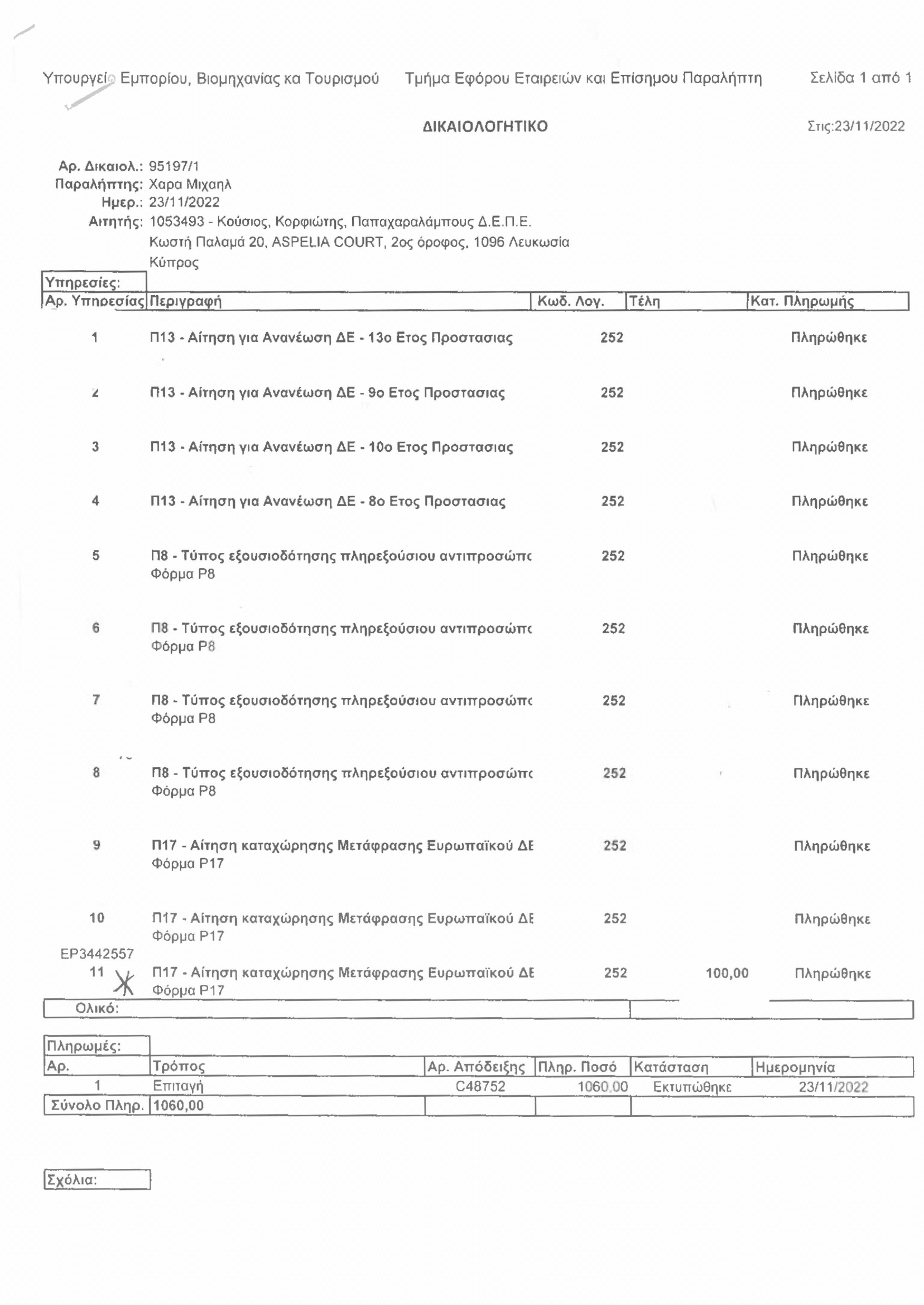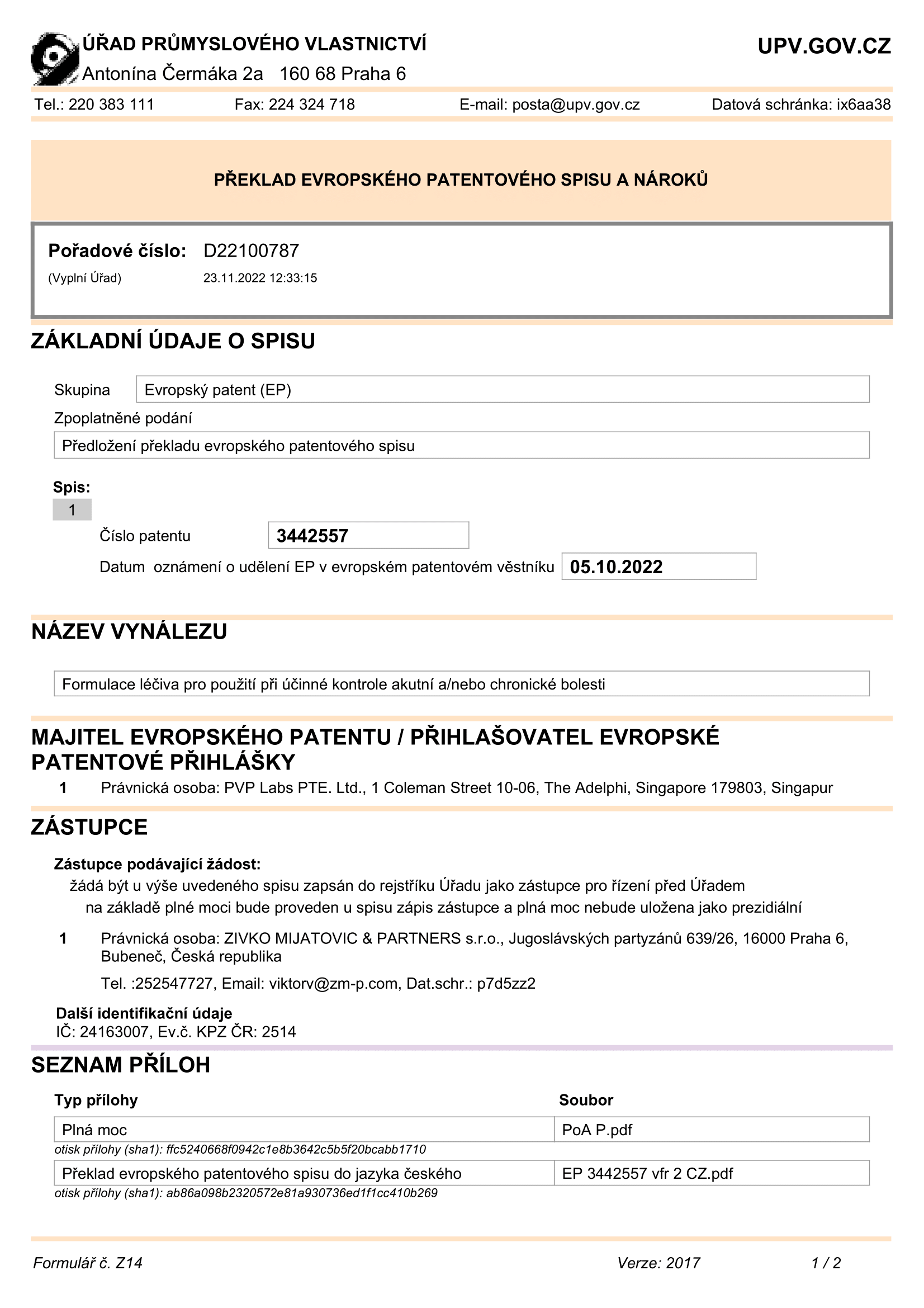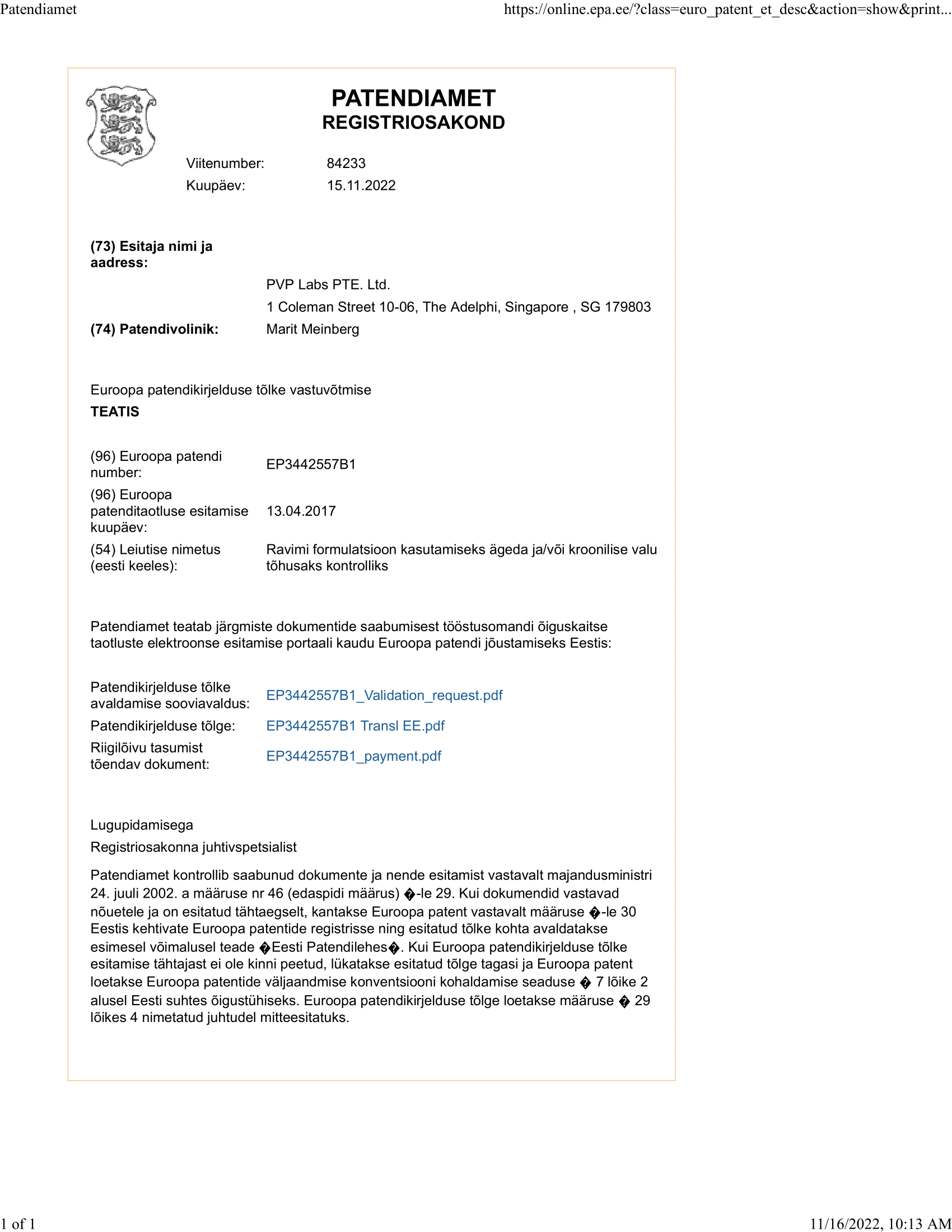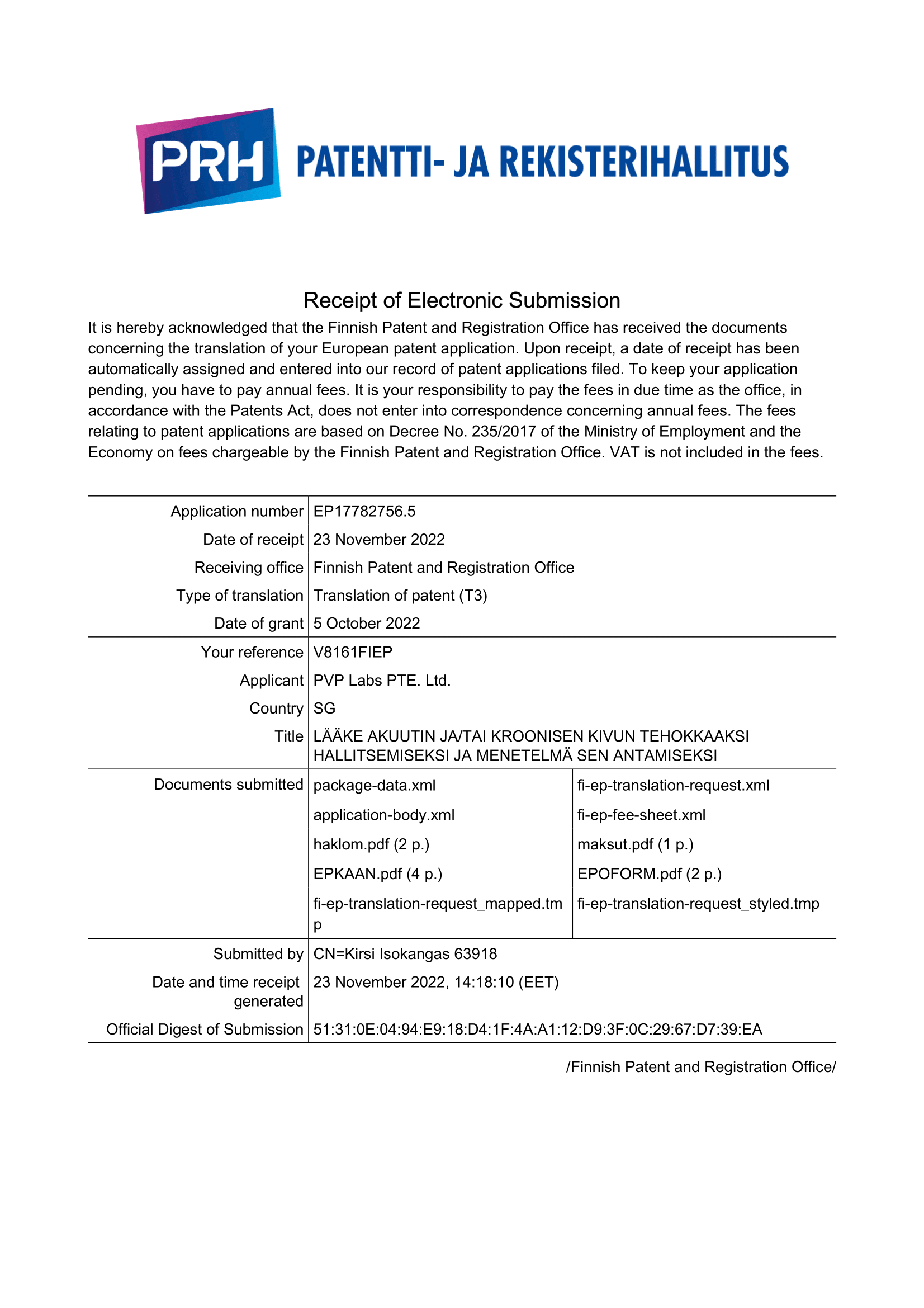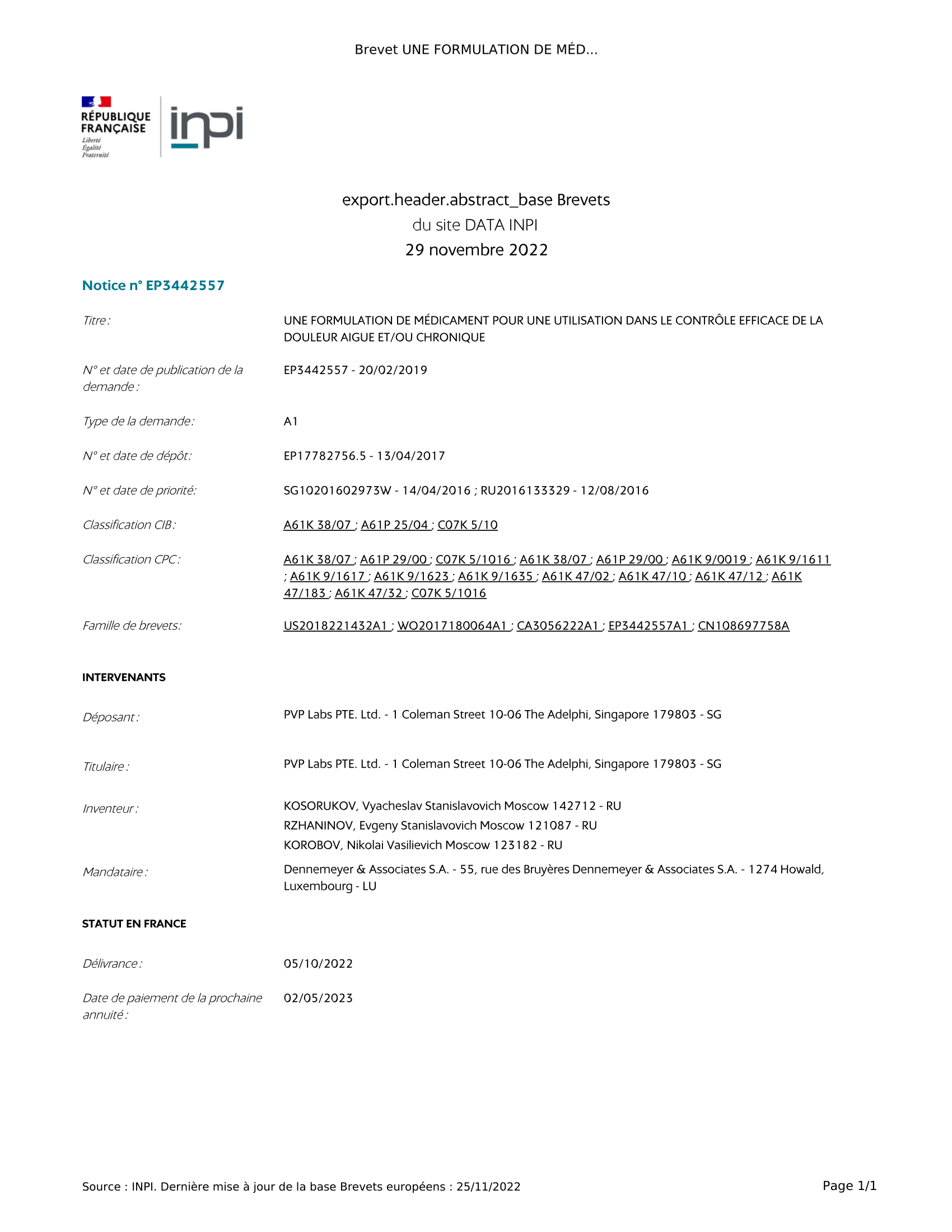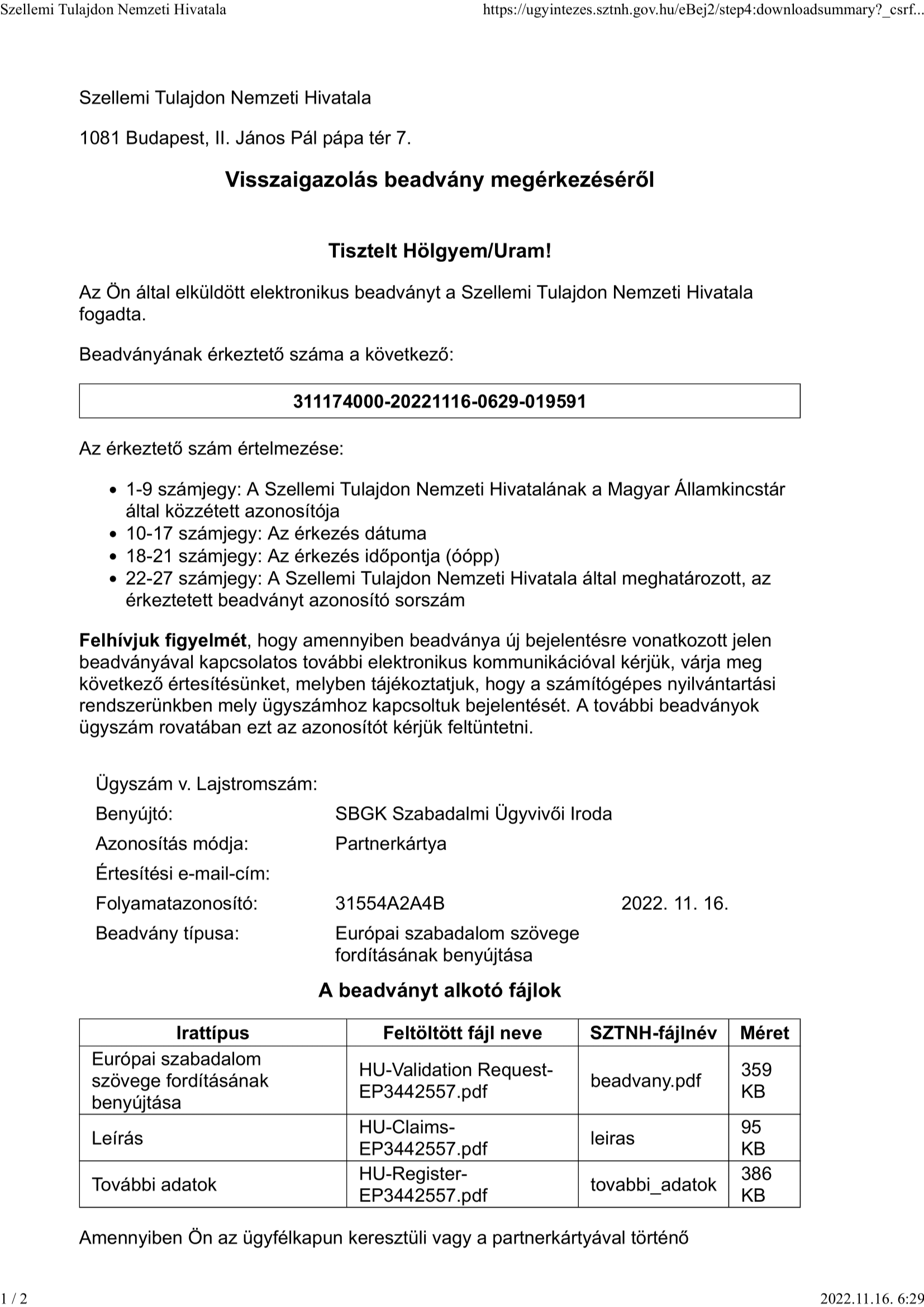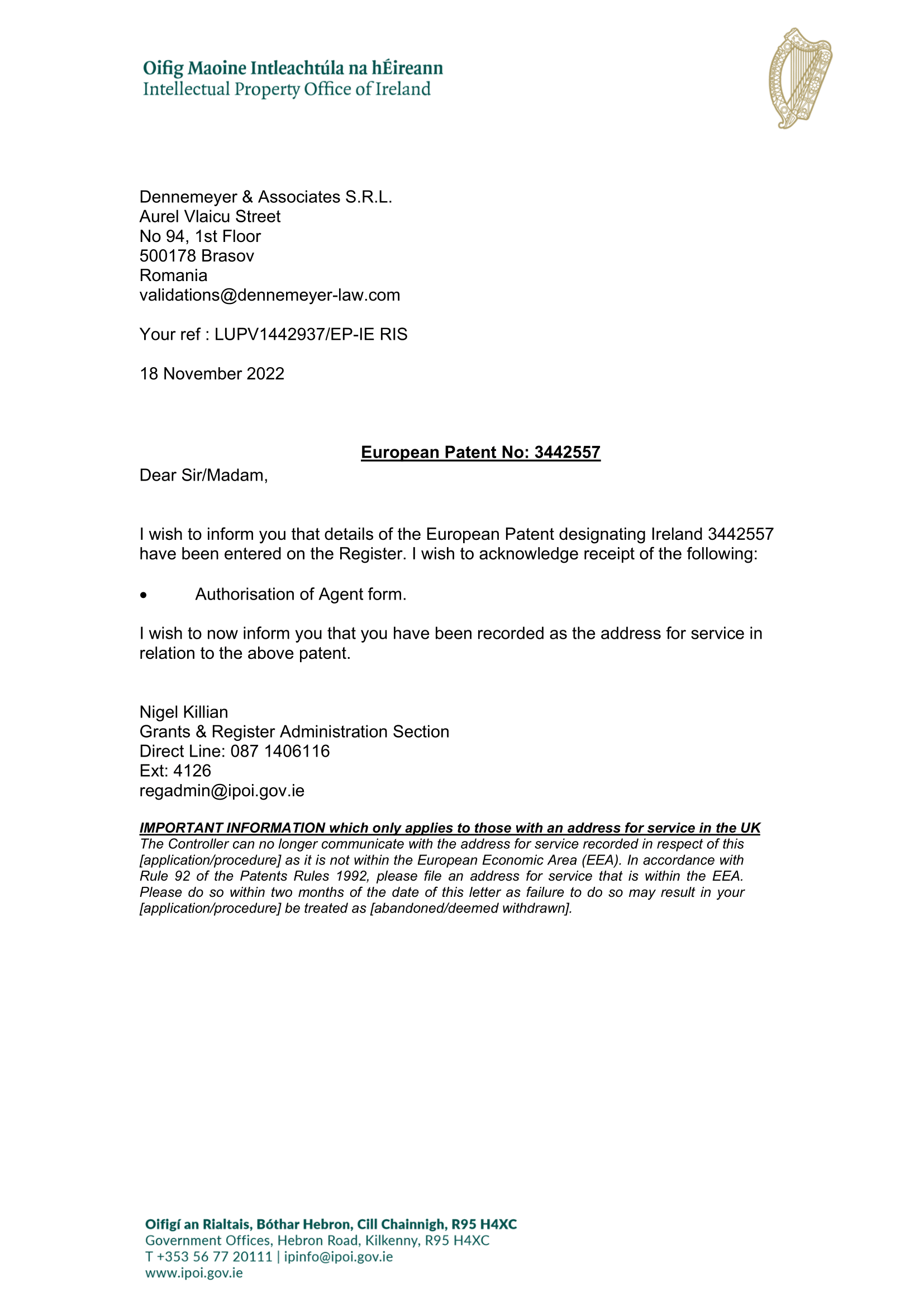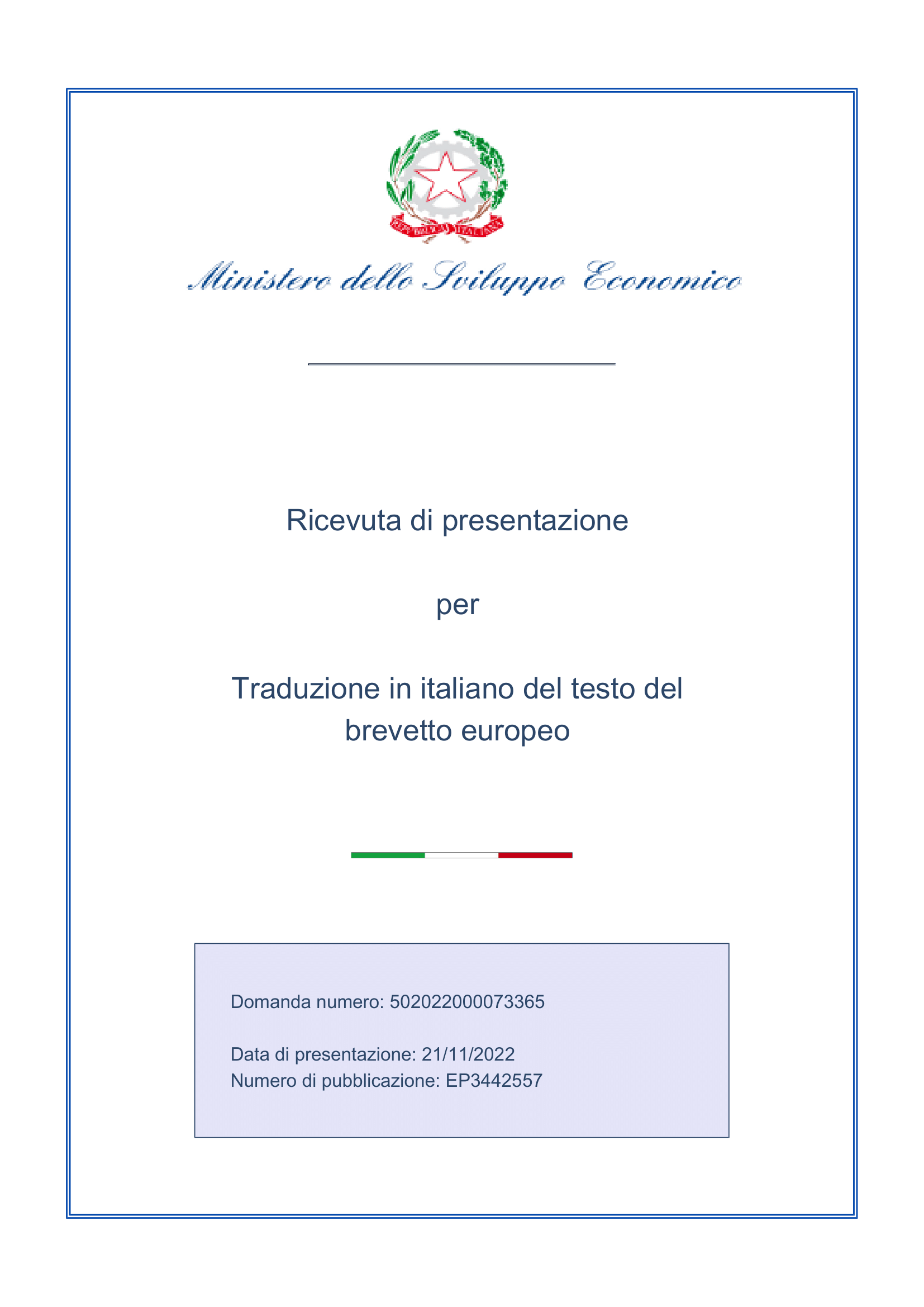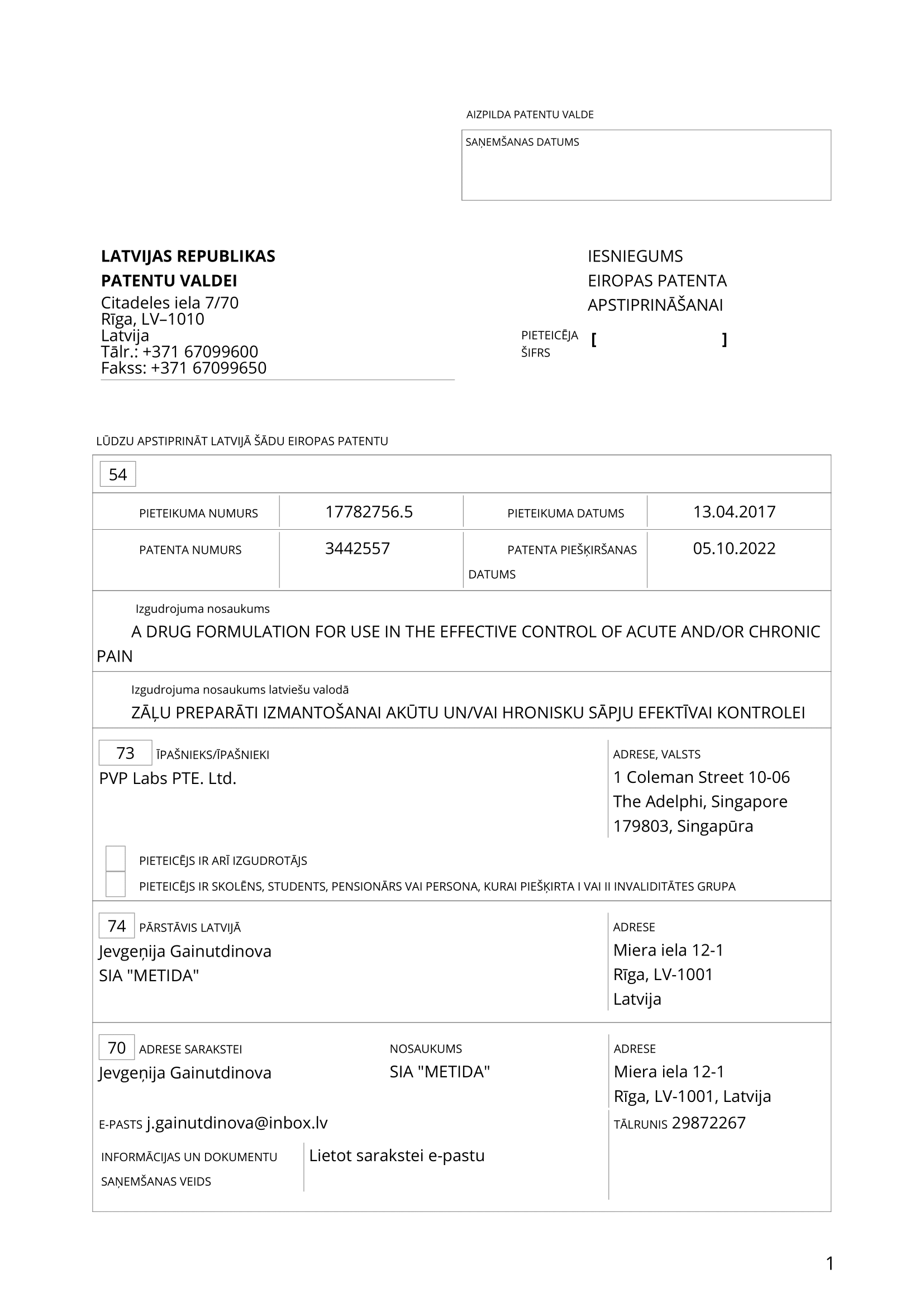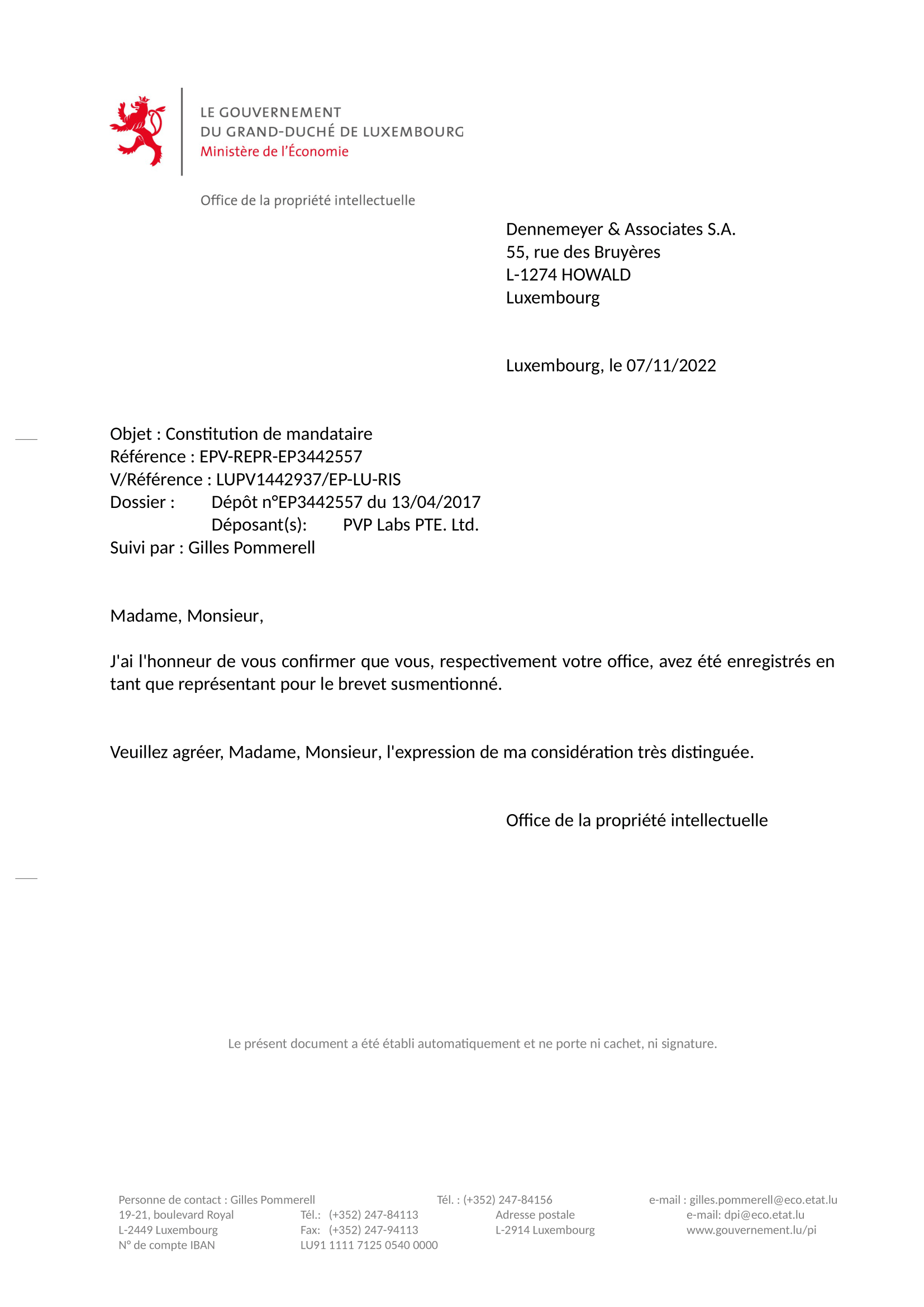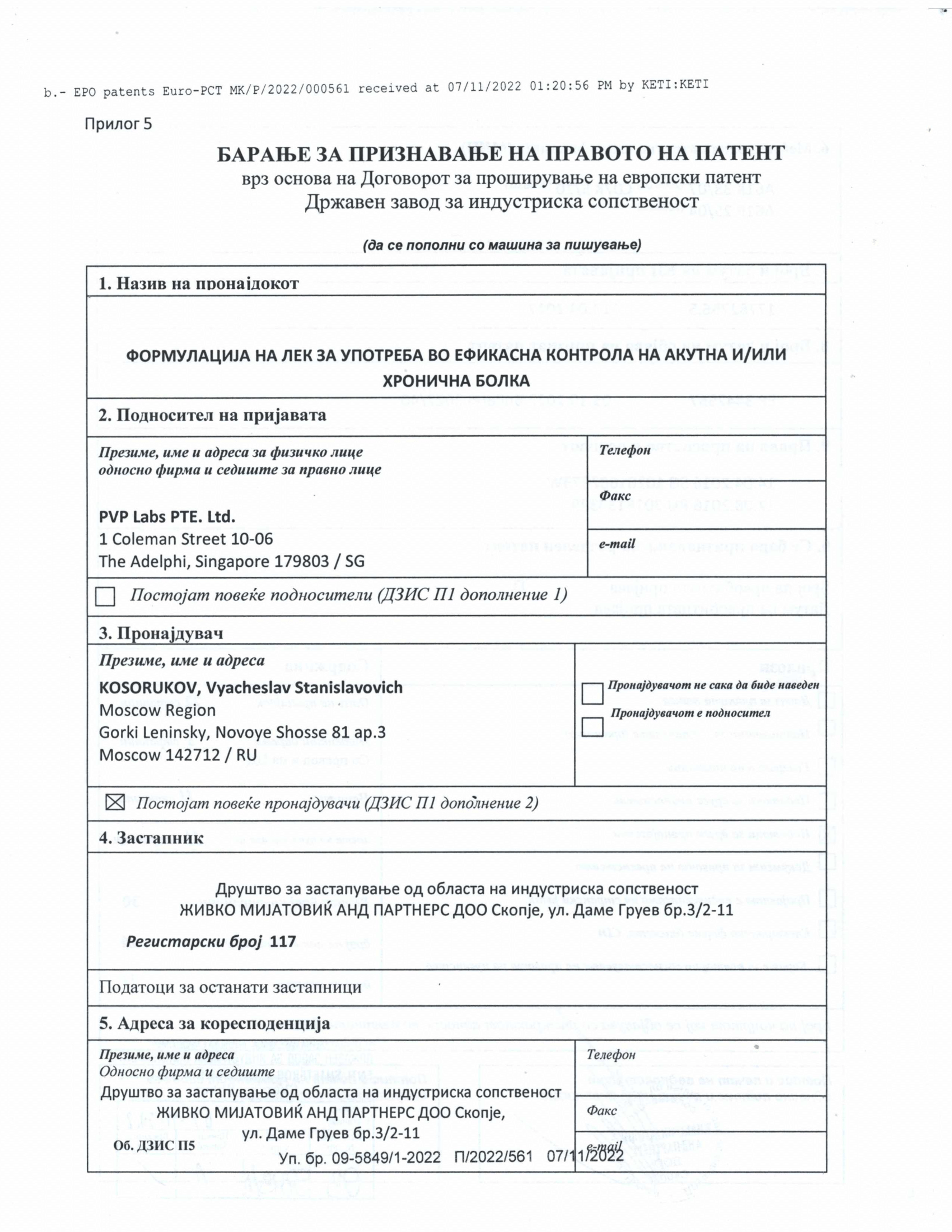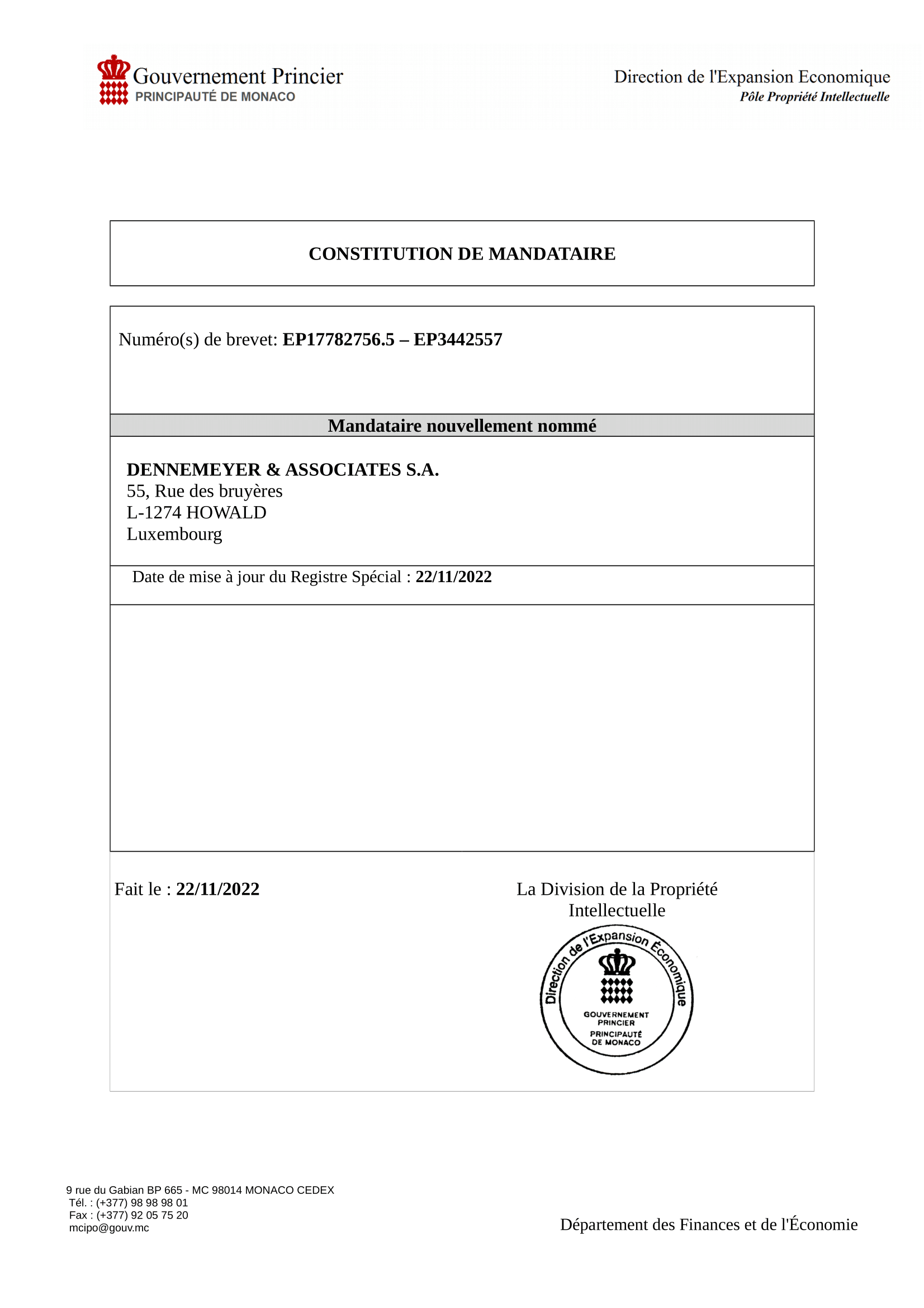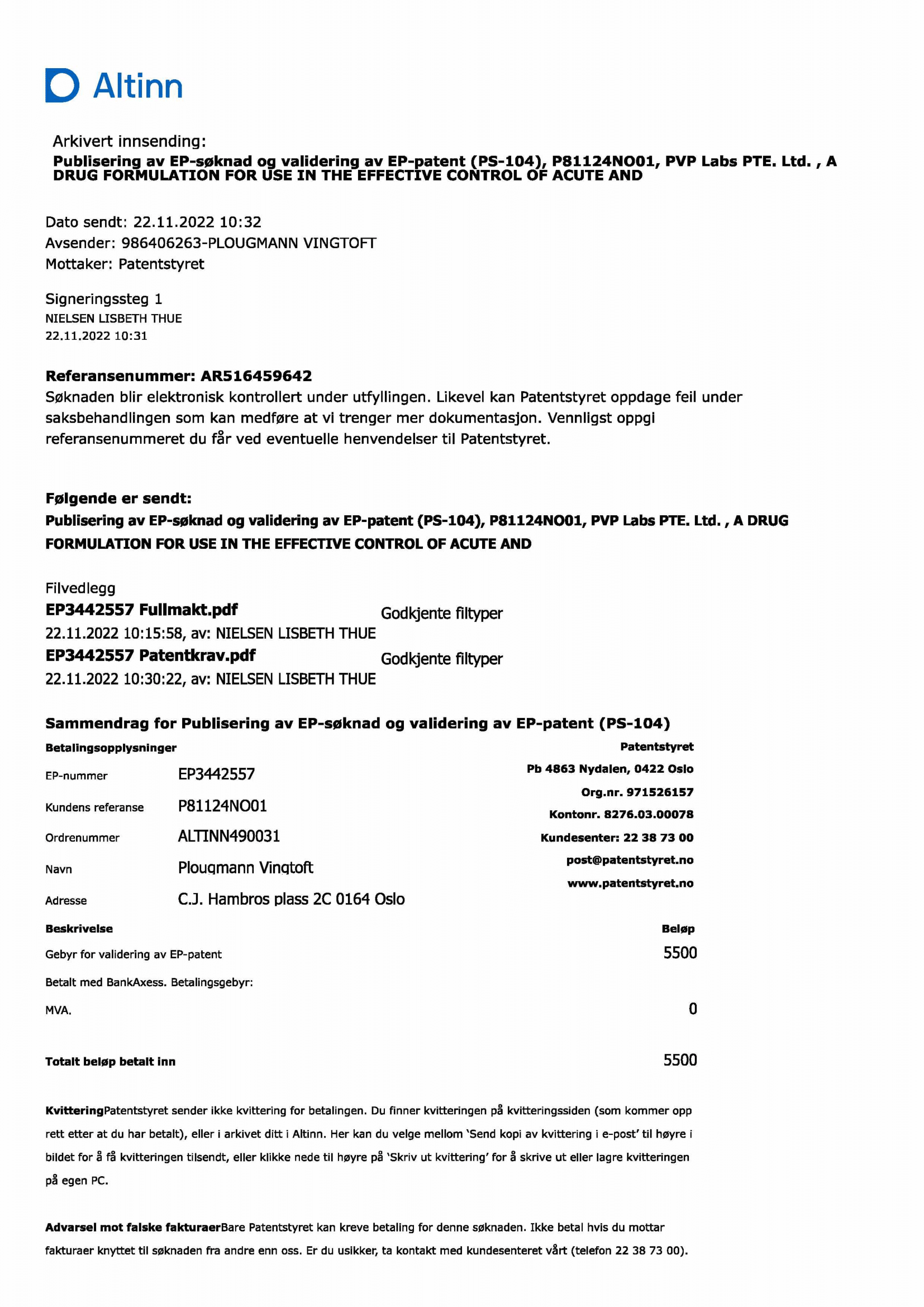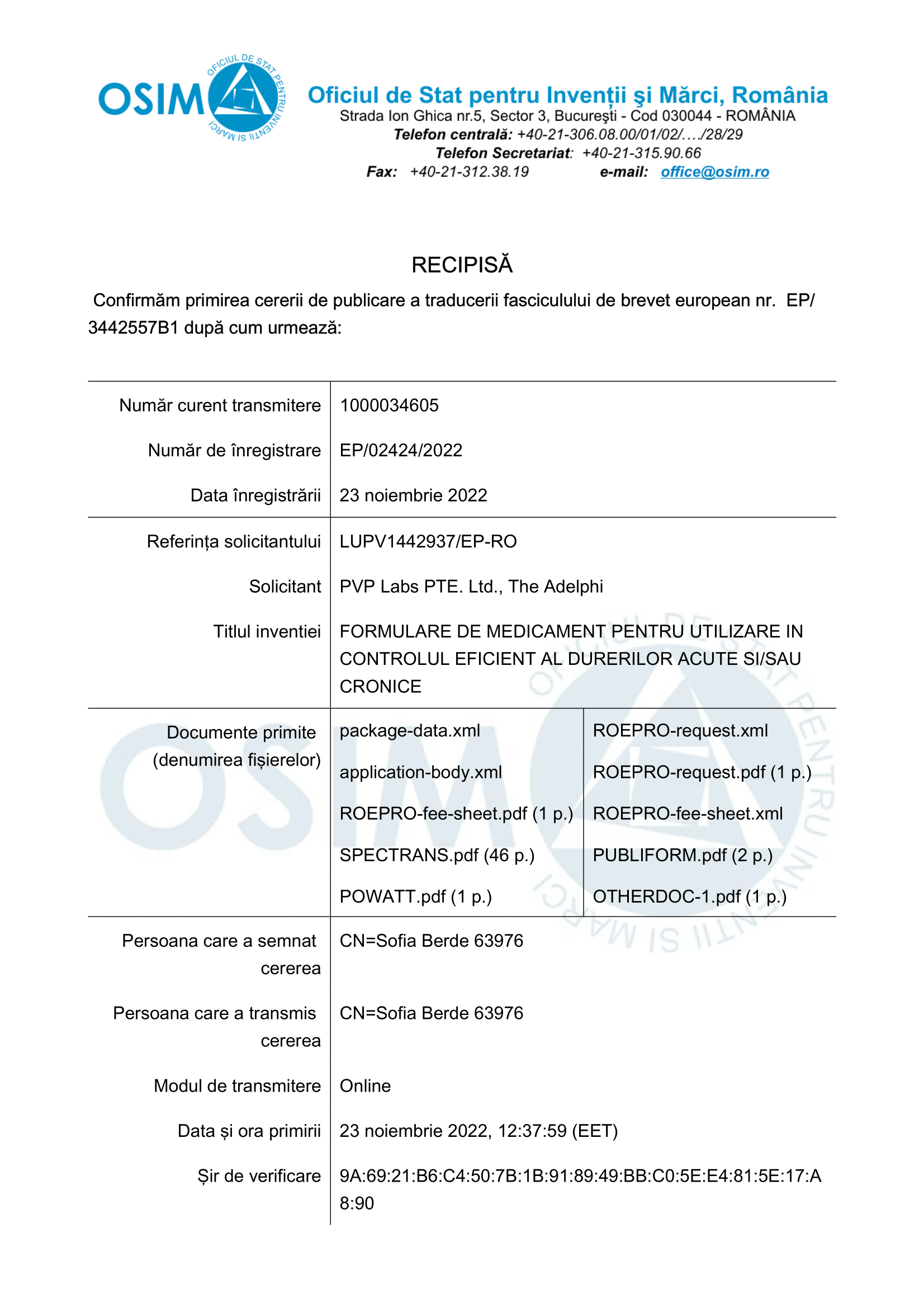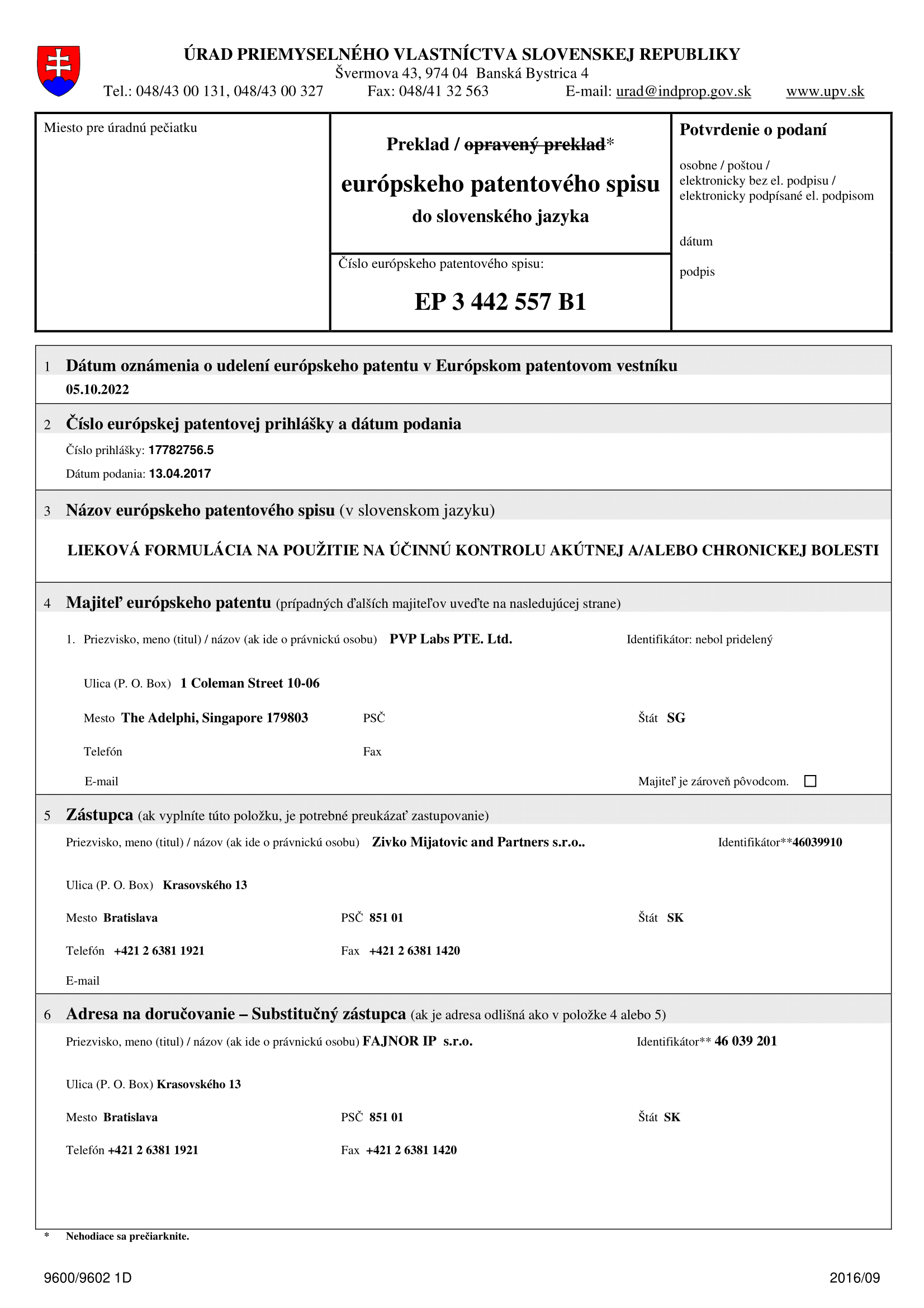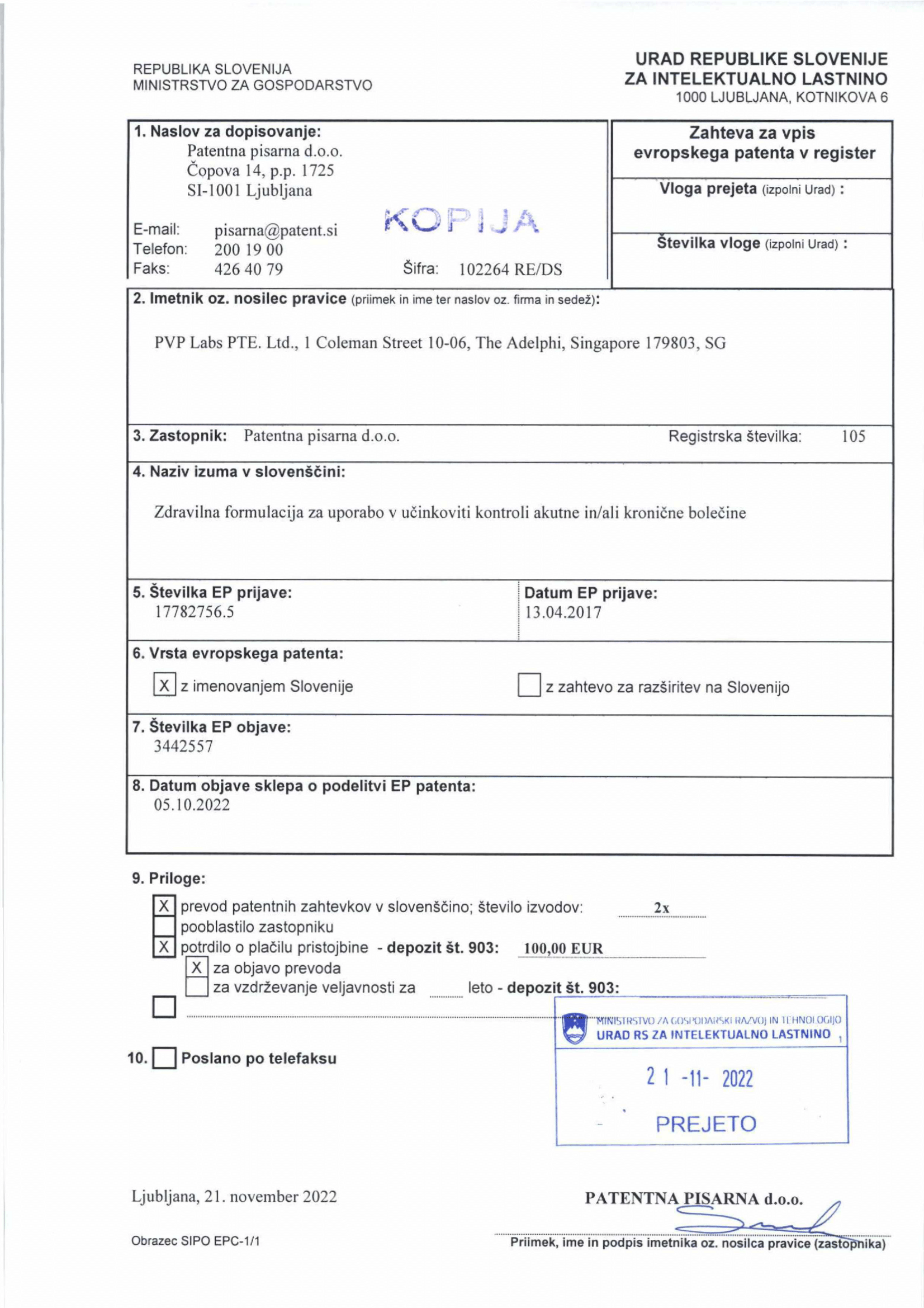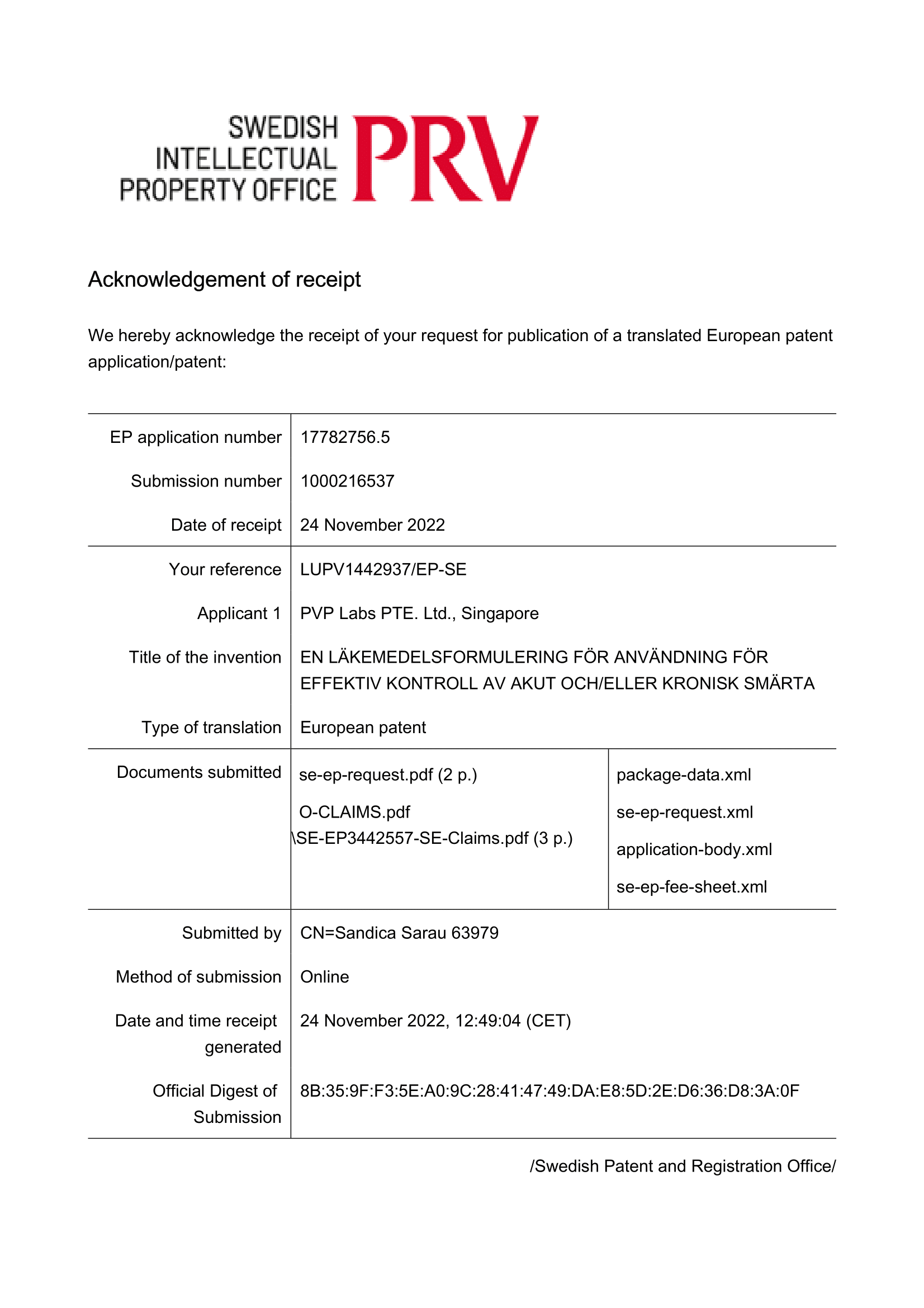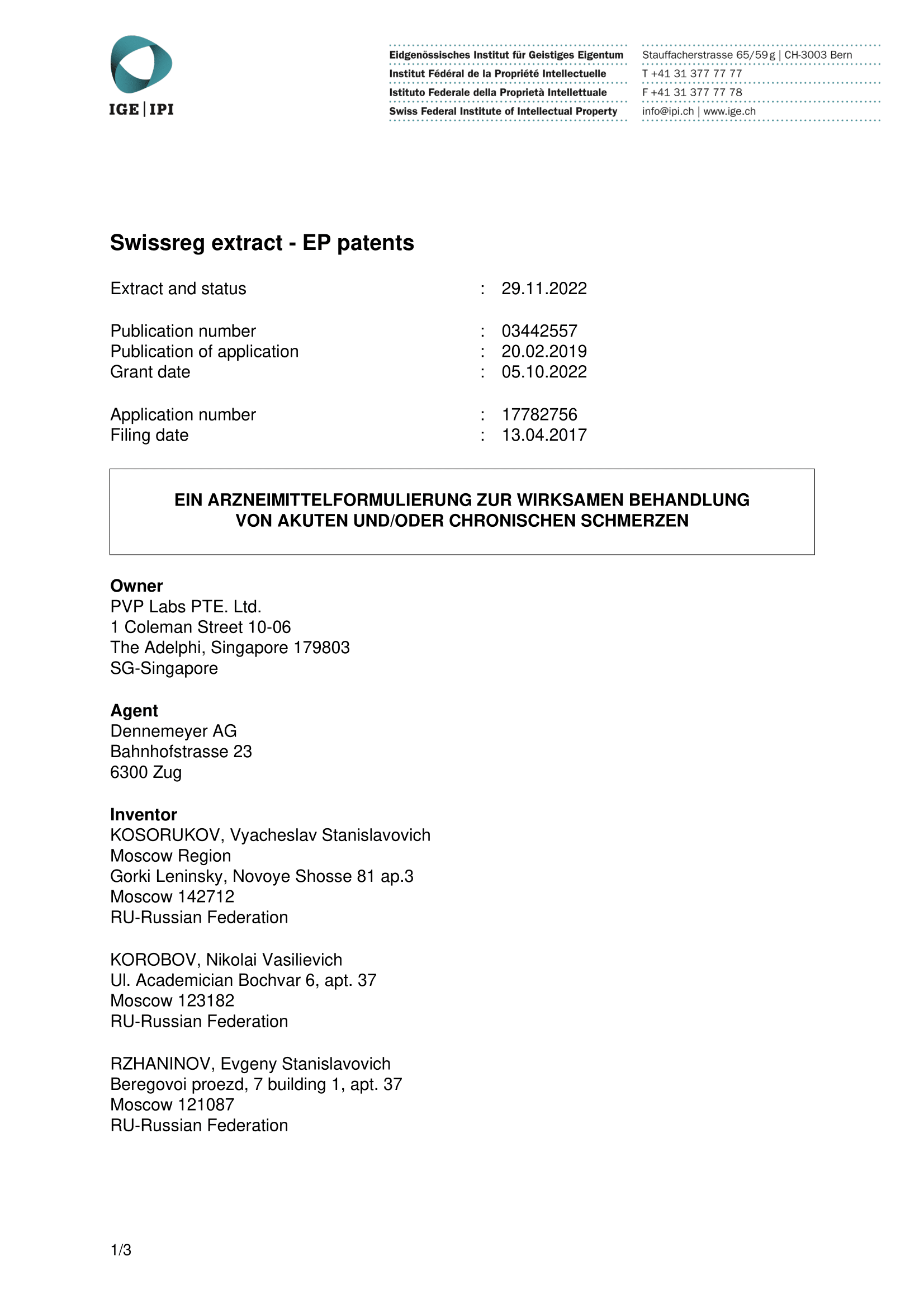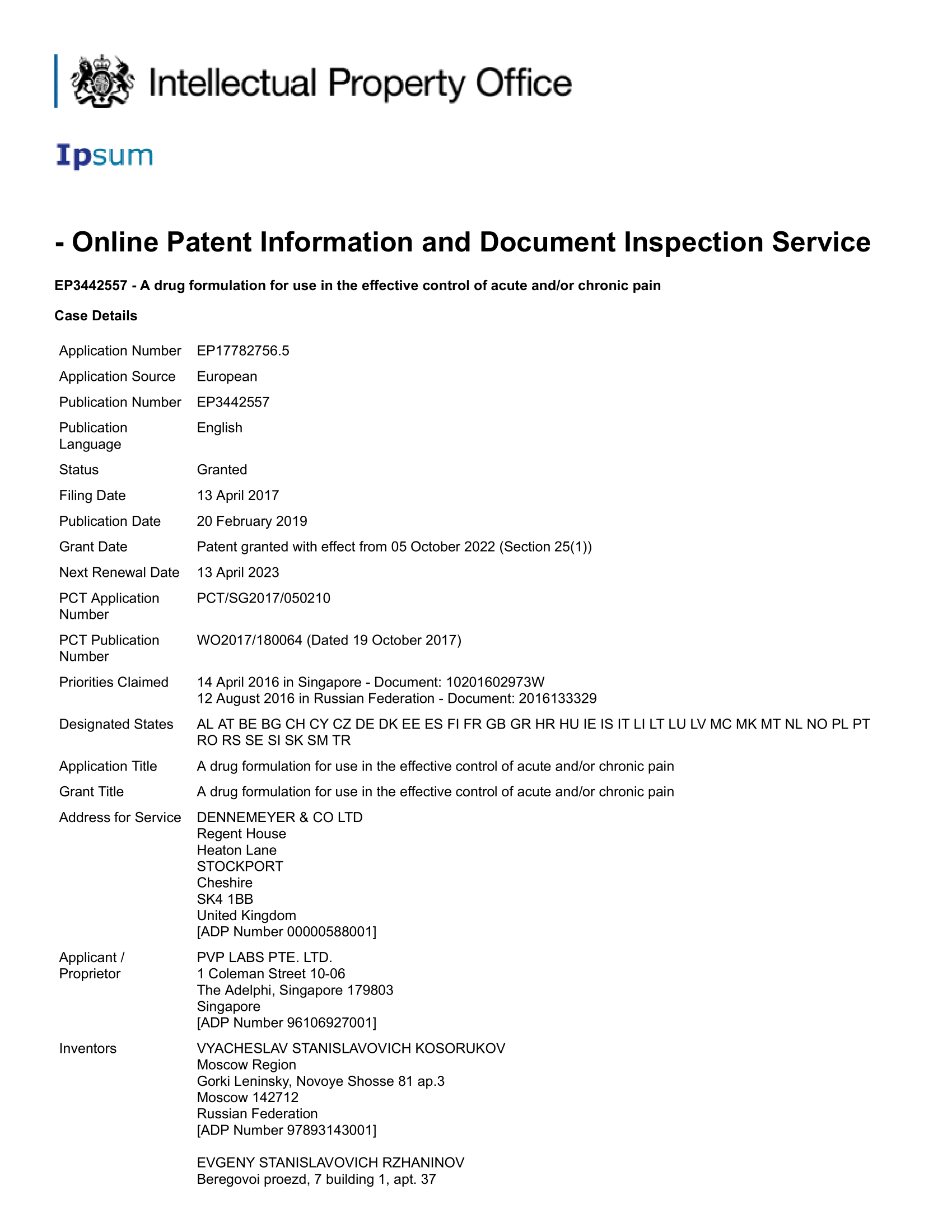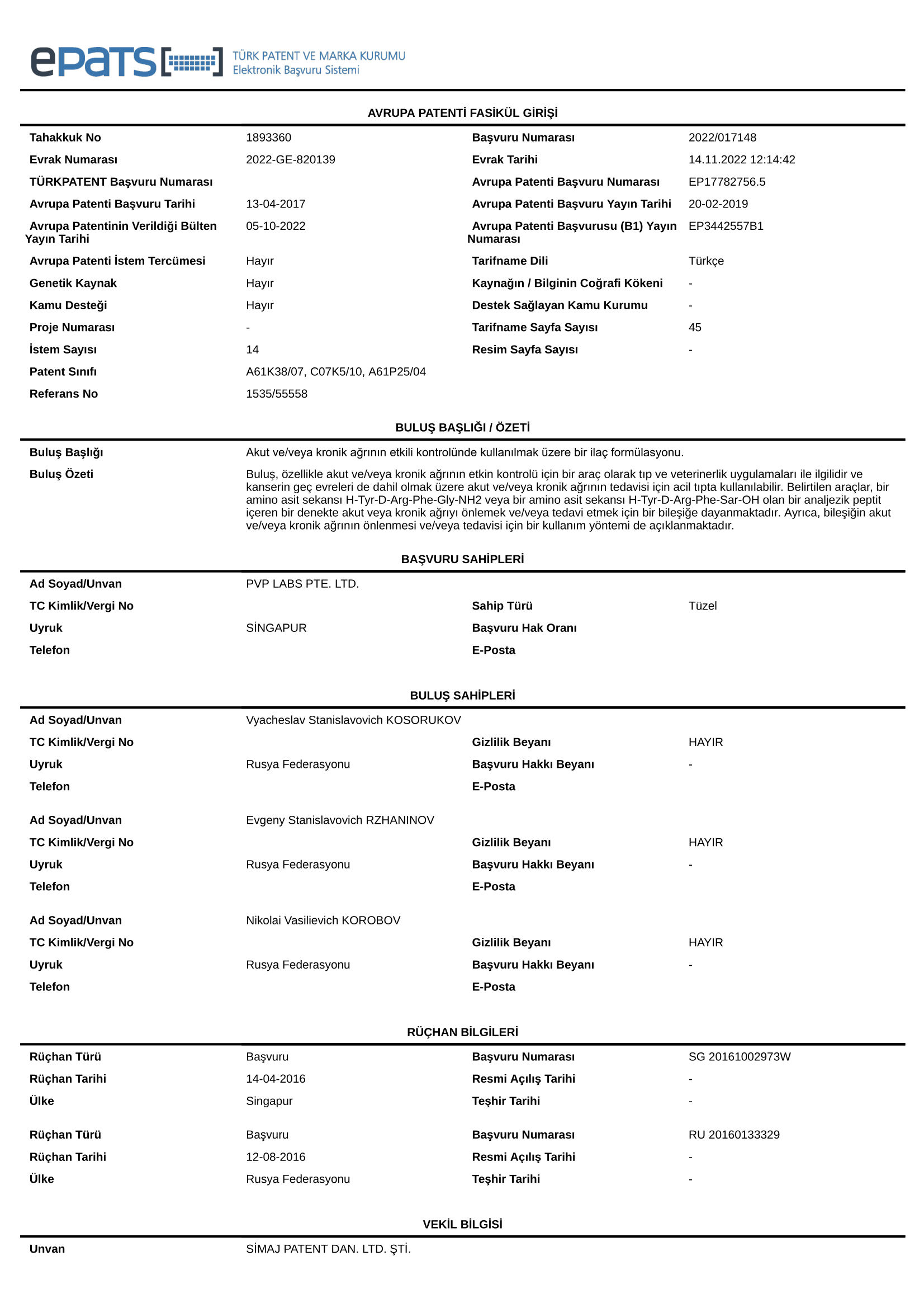- The primary efficacy endpoint was the rate of maintained analgesic response by Day 28.
- When verifying the hypothesis of non-inferiority of Taphalgin to oral morphine, the following results were obtained for the primary endpoint:
- the proportion of patients with analgesic response by Day 28 was 98.97% in Group 1 and 100.00% in Group 2 (p = 0.67) for the PP population
- The intergroup difference in the proportions of patients with a maintained analgesic response by Day 28 was 0.0103 (95% CI -0.0862; 0.0643)
- For the ITT population, the proportion of patients with a maintained analgesic response by Day 28 was:
- 84.17% in Group 1 and 88.14% in Group 2 (p = 0.48);
- the difference between the groups was 0.0397 (95% CI -0.0906; 0.1435)
- Because the upper limits of the 95% CI for the difference in the proportions were 6.43% (PP population) and 14.35% (ITT population), which did not exceed the non-inferiority margin of 20% set by the protocol, the hypothesis of noninferiority of Taphalgin to morphine was proven.
Fig.1 - Distribution of the medical investigator's evaluation of the therapy efficacy at Visit 2 (PP population)
Group 1 (Taphalgin)
Group 2 (morphine)
A comparative intergroup analysis of the investigator's evaluation of the therapy efficacy in points (Likert scale) at Visit 2 (PP population) revealed significant differences at Visit 2 (Pearson's chi-square test, p=0.01) in favor of Taphalgin, in respect of the number of “excellent effect” responses. The distribution of responses regarding the physician investigator's evaluation of the therapy efficacy is shown in Figure 1.
Fig. 2 - Distribution of patients' evaluation of the therapy efficacy at Visit 2 (PP population)
Group 1 (Taphalgin)
Group 2 (morphine)
Statistically significant differences between the study groups (Pearson's chi-square test, p=0.009) were revealed when analyzing the distribution of patients' evaluations of pain relief efficacy (PP population): thus, at Visit 2 in Group 1, the proportion of patients with “excellent effect”, “good effect”, and “satisfactory effect” of therapy was 70.10%, 25.77%, and 4.12%, respectively; in Group 2, the proportion of patients with “excellent effect”, “good effect”, and “satisfactory effect” of therapy was 50%, 50%, and 0%, respectively (Figure 2).

